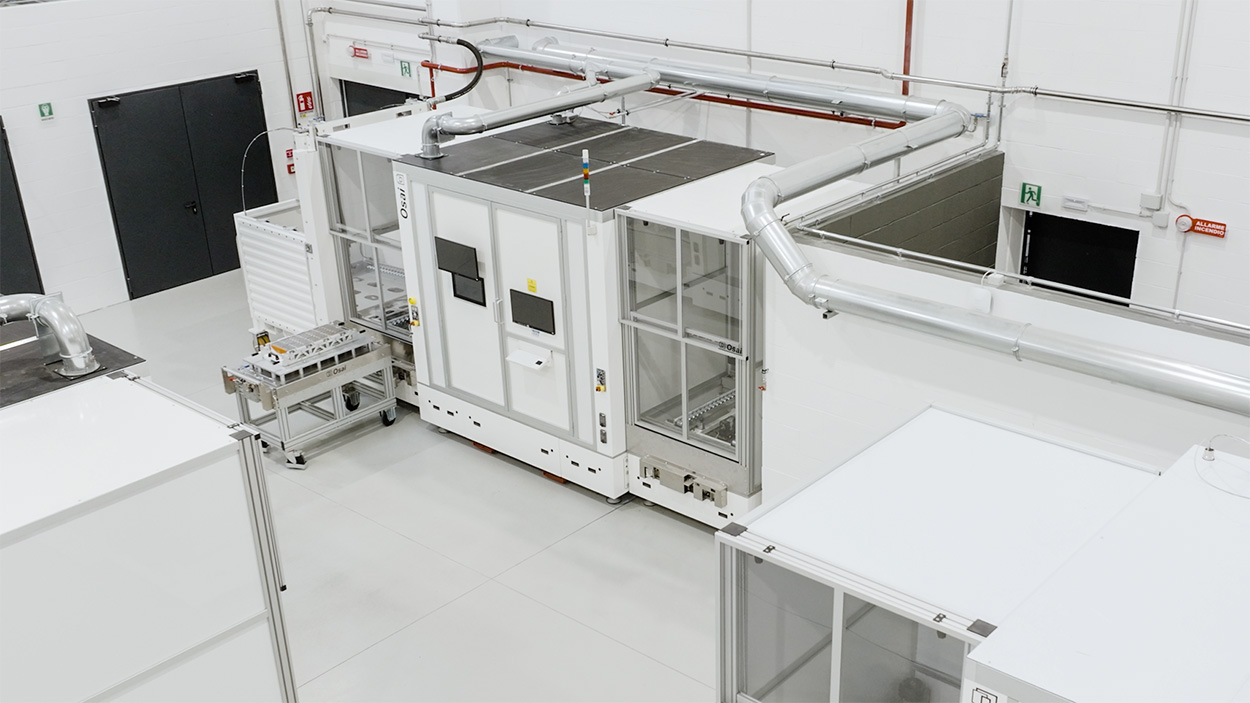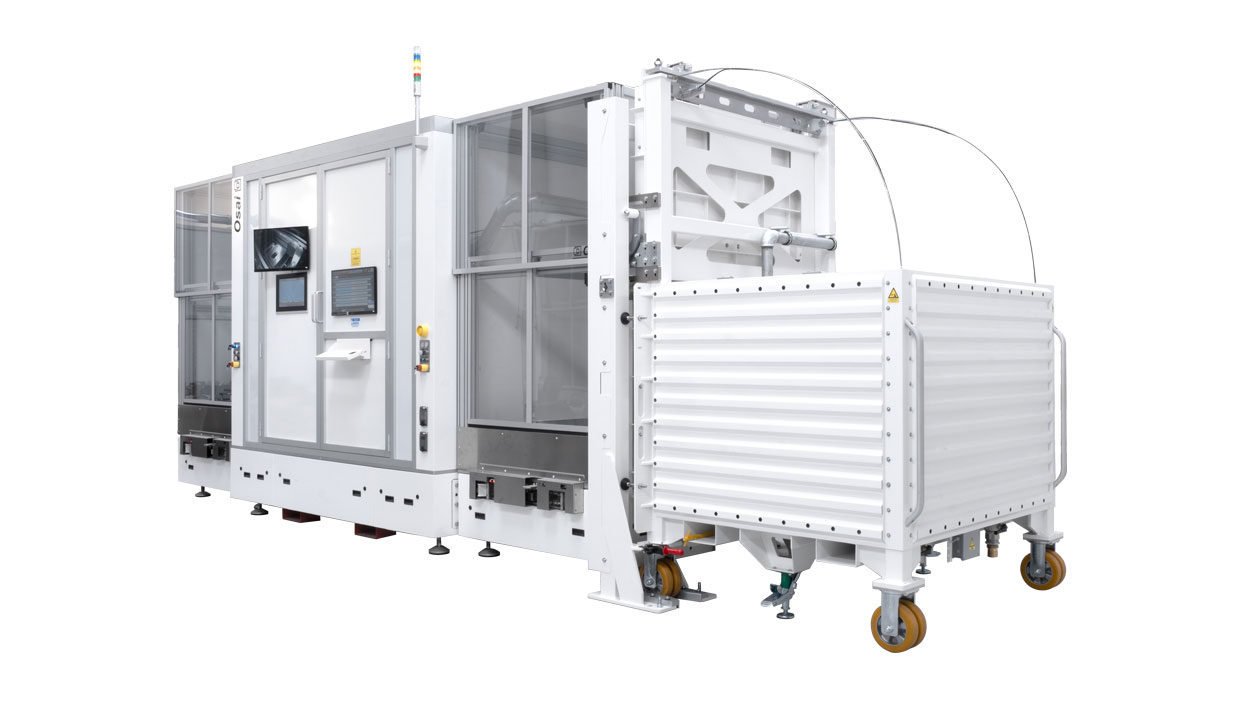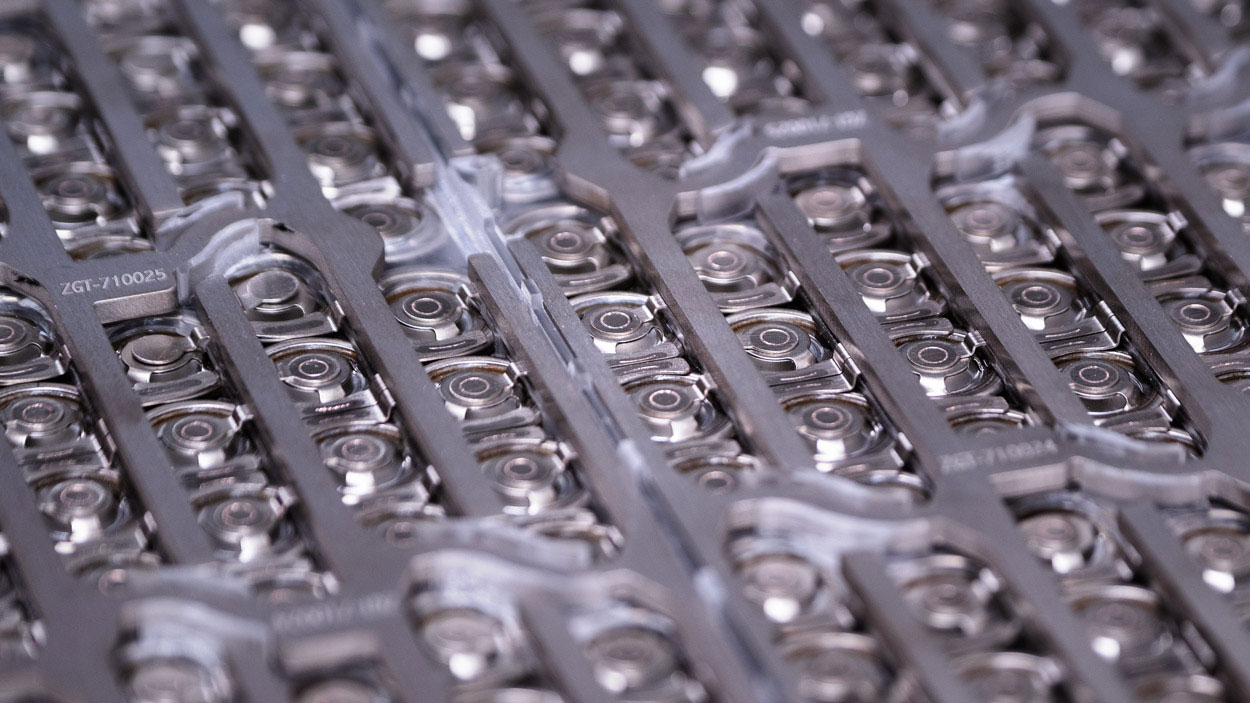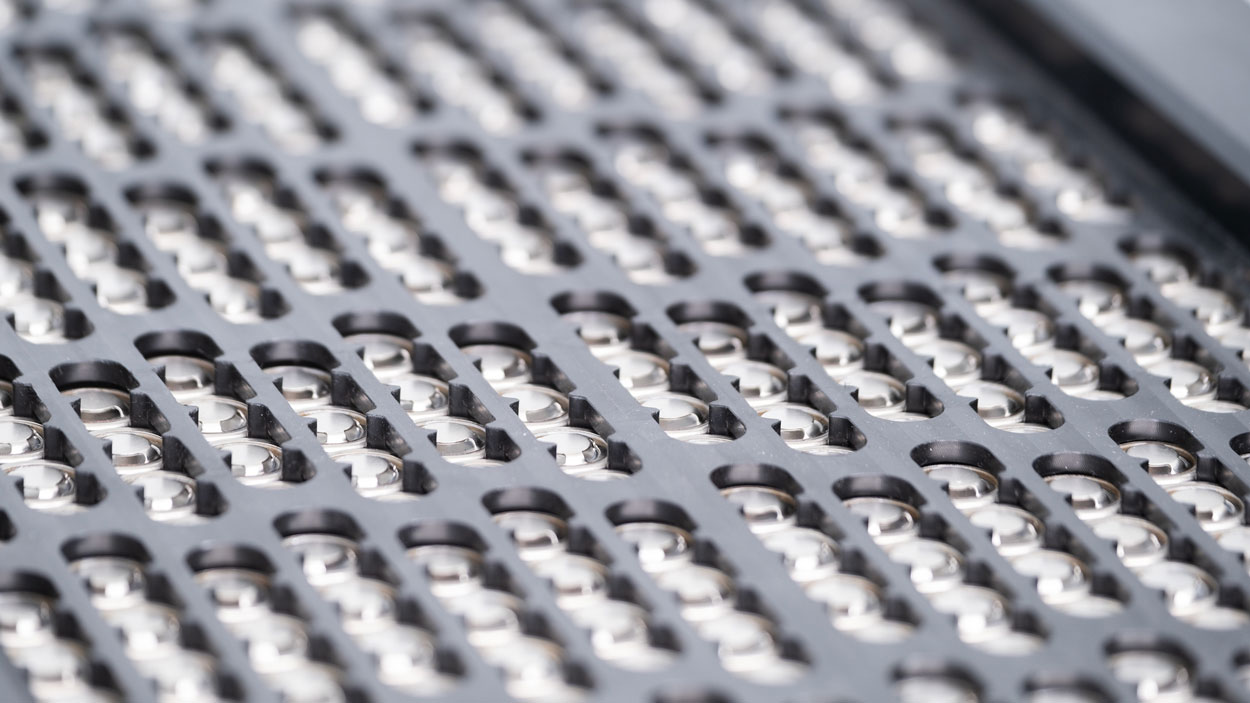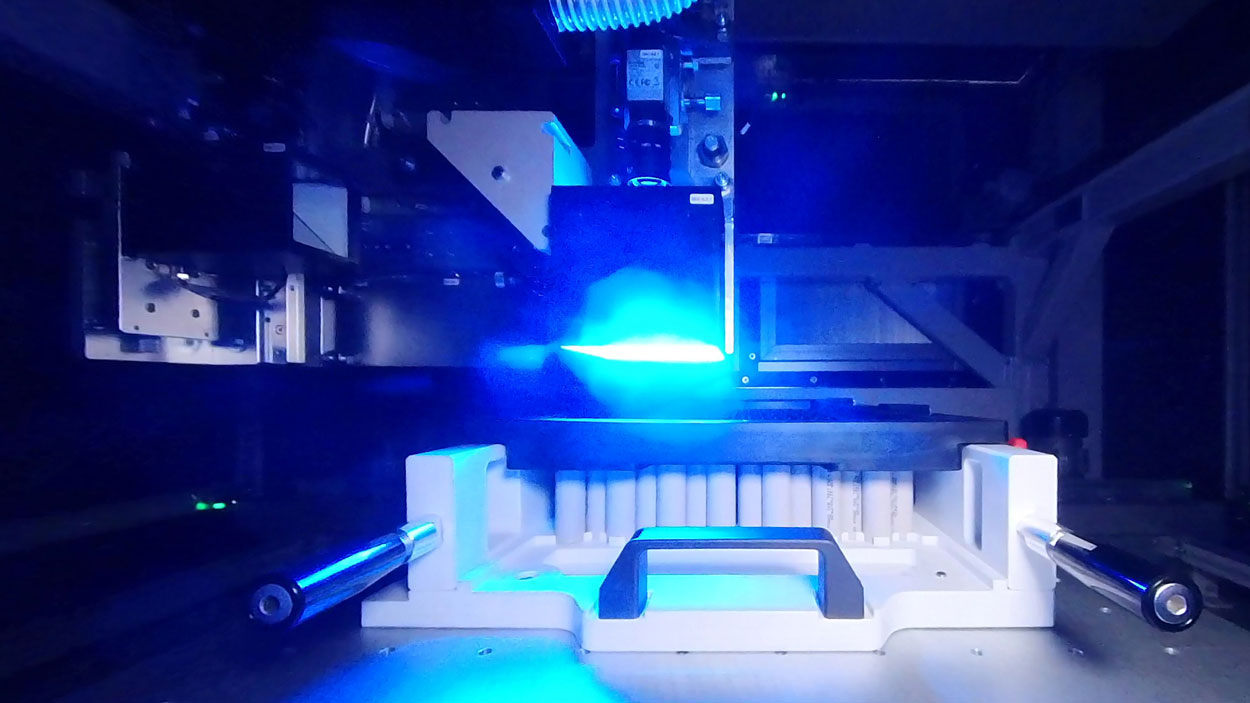Laser Processes in Battery Module Assembly
OSAI offers solutions for the automatic assembly of battery modules and uses Laser technology for the processes of Laser contact cleaning and busbar welding.
In the processing bench, the module is automatically transferred from the loading bay to the work area. Here, an advanced vision system scans the module and determines the absolute position of each cell, identifying them one by one to ensure accurate processing.
The system then sends the necessary corrections for the offset of each cell. A fiber-optic-borne Laser beam then performs, via a galvo scanner, the cleaning process by removing any type of contaminant from the battery contacts. This process is performed on each individual cell of the module, ensuring optimal preparation for the next step.
Contact cleaning is intended to reduce the resistance of the joint, thus improving the efficiency and life of the battery module. The absence of contaminants such as allows for uniform welding, with better electrical conductivity, and reduces resistive losses in the welded joint, improving the overall efficiency of the battery module.
After cleaning, the automated system applies pressure to the busbar to eliminate any gaps between the components and ensure perfect contact.
Inside the bench, the Cartesian robot integrates an advanced control and movement system for the optical group. This system is composed of cameras and a vision system that ensure precise alignment between the Laser and the joint to be welded; the Galvo scanner that directs the Llaser beam quickly and precisely towards the target area; the CW (Continuous Wave) Fiber Laser, a high-performance Laser source based on variable mode beam technology, allows the beam profile (diameter and power distribution) to be adapted to optimize heat transfer and welding quality.
The system ensures complete control of the process, reducing scraps and improving the reliability of the final product. Through an OCT – (Optical Coherence Tomography) system integrated into the process optics, the system can monitor the penetration and consistency of the welding in real time, detecting joint out of specification if any, guaranteeing 100% of quality to the final product.
Flexible automation is a production system based on the use of industrial robots, capable of allowing rapid production changes. The OSAI battery module assembly solution can be tailored to the product.
Laser Processes in Battery Module Assembly
OSAI offers solutions for the automatic assembly of battery modules and uses Laser technology for the processes of Laser contact cleaning and busbar welding.
In the processing bench, the module is automatically transferred from the loading bay to the work area. Here, an advanced vision system scans the module and determines the absolute position of each cell, identifying them one by one to ensure accurate processing.
The system then sends the necessary corrections for the offset of each cell. A fiber-optic-borne Laser beam then performs, via a galvo scanner, the cleaning process by removing any type of contaminant from the battery contacts. This process is performed on each individual cell of the module, ensuring optimal preparation for the next step.
Contact cleaning is intended to reduce the resistance of the joint, thus improving the efficiency and life of the battery module. The absence of contaminants such as allows for uniform welding, with better electrical conductivity, and reduces resistive losses in the welded joint, improving the overall efficiency of the battery module.
After cleaning, the automated system applies pressure to the busbar to eliminate any gaps between the components and ensure perfect contact.
Inside the bench, the Cartesian robot integrates an advanced control and movement system for the optical group. This system is composed of cameras and a vision system that ensure precise alignment between the Laser and the joint to be welded; the Galvo scanner that directs the Llaser beam quickly and precisely towards the target area; the CW (Continuous Wave) Fiber Laser, a high-performance Laser source based on variable mode beam technology, allows the beam profile (diameter and power distribution) to be adapted to optimize heat transfer and welding quality.
The system ensures complete control of the process, reducing scraps and improving the reliability of the final product. Through an OCT – (Optical Coherence Tomography) system integrated into the process optics, the system can monitor the penetration and consistency of the welding in real time, detecting joint out of specification if any, guaranteeing 100% of quality to the final product.
Flexible automation is a production system based on the use of industrial robots, capable of allowing rapid production changes. The OSAI battery module assembly solution can be tailored to the product.

